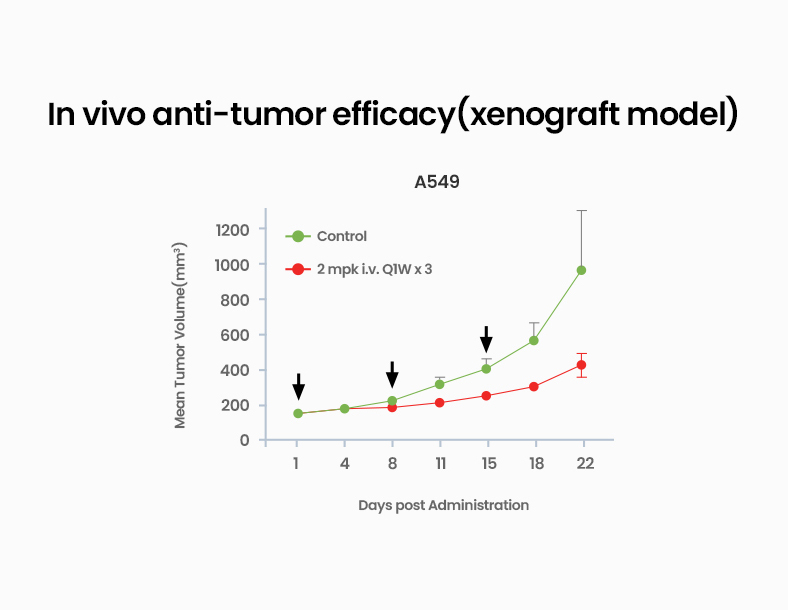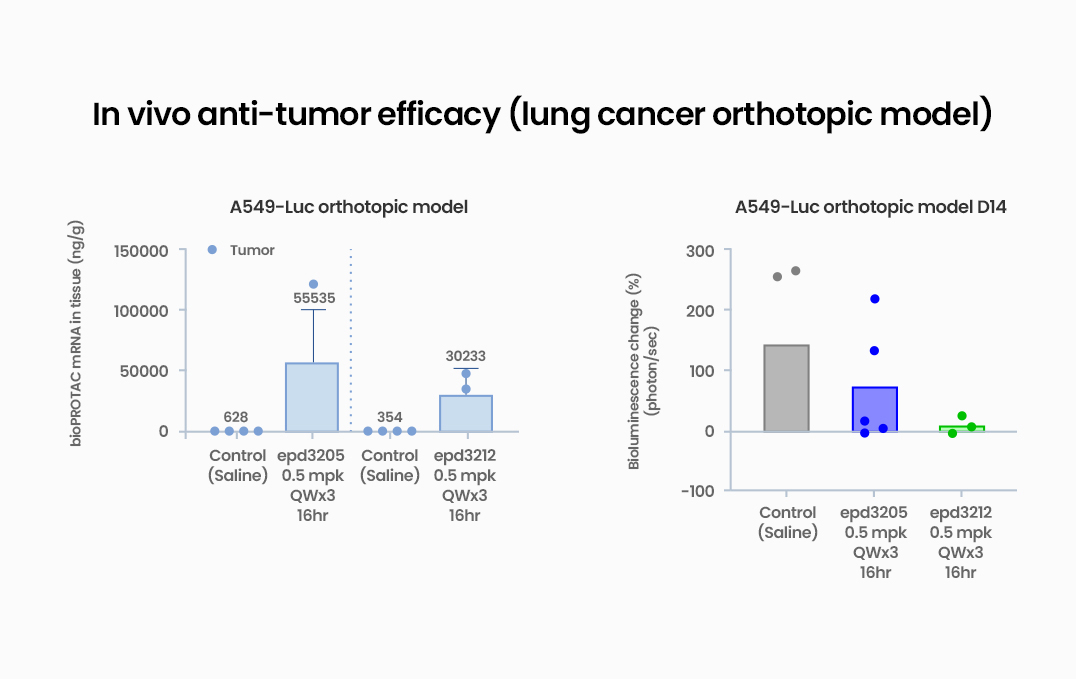GX-BP1 Next-generation Targeted Protein Degrader
GX-BP1(SOX2-bioPROTAC)
Disease Indication
- 1Monotherapy: Lung Squamous cell Carcinoma (LUSC)
- 2Combination Therapy: Multiple Solid Tumors (Elimination/Reversal of resistance to anti-cancer Standard of Care (SOC) agents)
Development Stage
- 1Confirmation of SOX2 target protein ubiquitination and proteasomal degradation
- 2Confirmation of robust in vivo efficacy in a lung cancer xenograft animal model
- 2Preparing the IND package utilizing LNPs for lung-specific delivery of mRNA
Summary
- 1Lung Squamous Cell Carcinoma (LUSC) represents a market with significant unmet medical need and high growth potential due to the lack of effective therapeutic agents.
- 2The only novel therapeutic approach to date that targets the SOX2 protein, which was previously considered "undruggable" by any existing therapeutic agent.
- 2Offers significant potential for overcoming drug resistance when combined with standard-of-care agents.
Structure
This is a next-generation Targeted Protein Degrader (TPD) constructed as a direct fusion protein comprising a nanobody that specifically binds to the SOX2 protein and an engineered E3 protein. It possesses innovative differentiators compared to first-generation TPDs, such as small-molecule-based PROTACs.

Mechanism
- 1GX-BP1 induces cancer cell death by selectively degrading the key oncogenic transcription factor SOX2 protein, which promotes proliferation, survival, invasion/metastasis, cancer stemness, and drug resistance. Furthermore, it acts to eliminate acquired resistance to standard-of-care agents in cancer cells.
- 2mRNA-encoded GX-BP1 is delivered to the lungs via LNPs that have been confirmed for lung-specific delivery.
Characteristics
SOX2 bioPROTAC (i.v., standard LNP) demonstrated robust in vivo efficacy in A549 and BxPC3 xenograft models.
"First-in-world demonstration of in vivo efficacy for an SOX2 degrader."
SOX2 bioPROTAC (i.v., lung-targeted LNP) showed signs of anti-tumor activity in an A549 orthotopic model.

